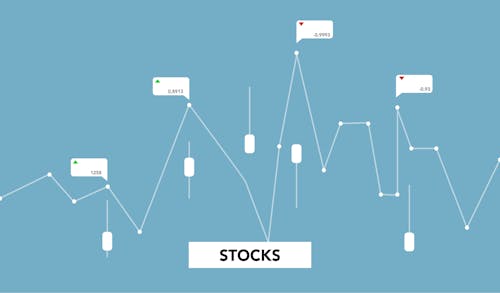Why Your $100 Stock Is Going To $88

Image Source: Pexels
You bought the stock at $100. Now it's $140.
You won't sell because that $100 purchase price has become your anchor. Not the fundamentals.
Not the technicals.
Just that meaningless number you paid months ago.
This mental defect will cost you everything when this market corrects. And the machines know exactly how to exploit it.
The machines don't anchor to prices - they anchor to probabilities.
While you're clinging to your cost basis, they're calculating mathematical exit points with zero emotion.
Here’s how you can beat them at their own game…
The Prison of Your Purchase Price
Anchoring bias makes traders rely on irrelevant information to make decisions. The price you paid for a stock has zero bearing on where it's going next.
Tesla (TSLA) at $180 doesn't care that you bought it at $150. The algorithms processing millions of trades per second don't factor in your personal entry point. Only you do.
Yet traders hold losing positions because "I bought it at $100." They refuse profits because "I'm waiting for $150." The purchase price becomes a mental prison that overrides all logic.
I just covered half my Tractor Supply short at $56. Hit my oversold target, took the money. Could I squeeze more? Maybe. But I don't anchor to arbitrary targets when the technicals say exit.
How the Machines Exploit Your Anchors
The algorithms know retail traders anchor to round numbers. That's why support breaks at $99.50 instead of $100. Why resistance holds at $149.75 instead of $150.
Wells Fargo (WFC) just got downgraded at 15 times earnings. Morgan Stanley's analyst finally admitted what I've been saying - banks at 15x have zero upside. But retail investors won't sell because they're anchored to their $57 entry.
When Wells Fargo drops to $45, those same investors will hold all the way down. "I'll sell when it gets back to my purchase price." It never will. The algorithms already calculated the selling pressure from trapped longs and positioned accordingly.
The Flexibility Rule
Break anchoring bias with one simple rule: Your entry price is irrelevant after you buy.
PayPal (PYPL) ripped today. I bought it at 12 times earnings when everyone hated it. If it hits 20 times earnings tomorrow, I'm gone. Don't care that I'm up 40%. Don't care about my cost basis. Expensive is expensive.
Lululemon (LULU) crashed from $530 to $165. I bought at 10 times earnings. The purchase price doesn't determine my exit - the valuation does. When it gets expensive again, I'll sell regardless of my anchor.
Why This Market Will Destroy Anchored Traders
We're 200% overvalued by Buffett's indicator. The S&P should be at 3,200 based on historical valuations. Every professional knows this.
But retail traders are anchored to recent highs. "The market was at 6,700, so 6,500 is a bargain." No. 6,500 is still double fair value.
When this corrects - and mathematical reversion guarantees it will - anchored traders will ride it down. They'll wait for their entry prices while the machines systematically destroy liquidity levels.
The algorithms don't anchor. They calculate. They measure probability, not price. They exit when momentum breaks, not when they "get back to even."
Your purchase price is a psychological trap. The machines don't fall for it.
Look, I built these systems. I know how they think. While you're married to your cost basis, the algorithms are calculating exit probabilities every millisecond. They'll dump your "favorite" stock without hesitation when the math changes.
More By This Author:
The VIX Just Broke Its Own RulesWhy The Inflation Crowd Is Missing The Real Money
The Warning Signal Most Traders Miss
Disclaimer: DMO Holdings Corp., which owns MJobserver.com, is not registered with any financial or securities regulatory authority, and does not provide nor claims to provide investment ...
more


